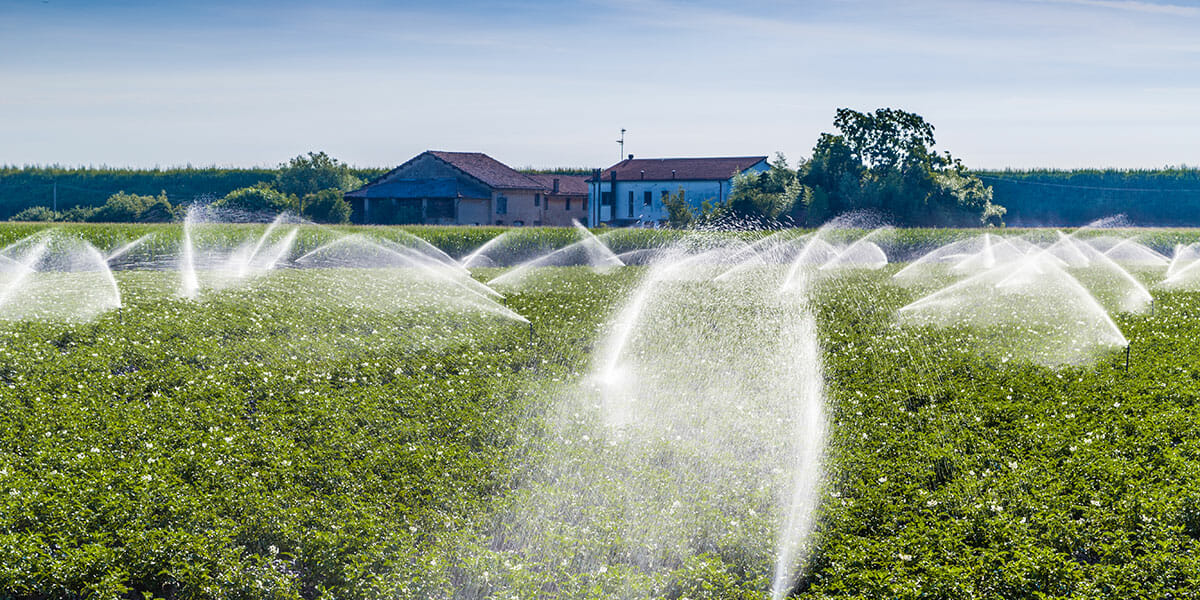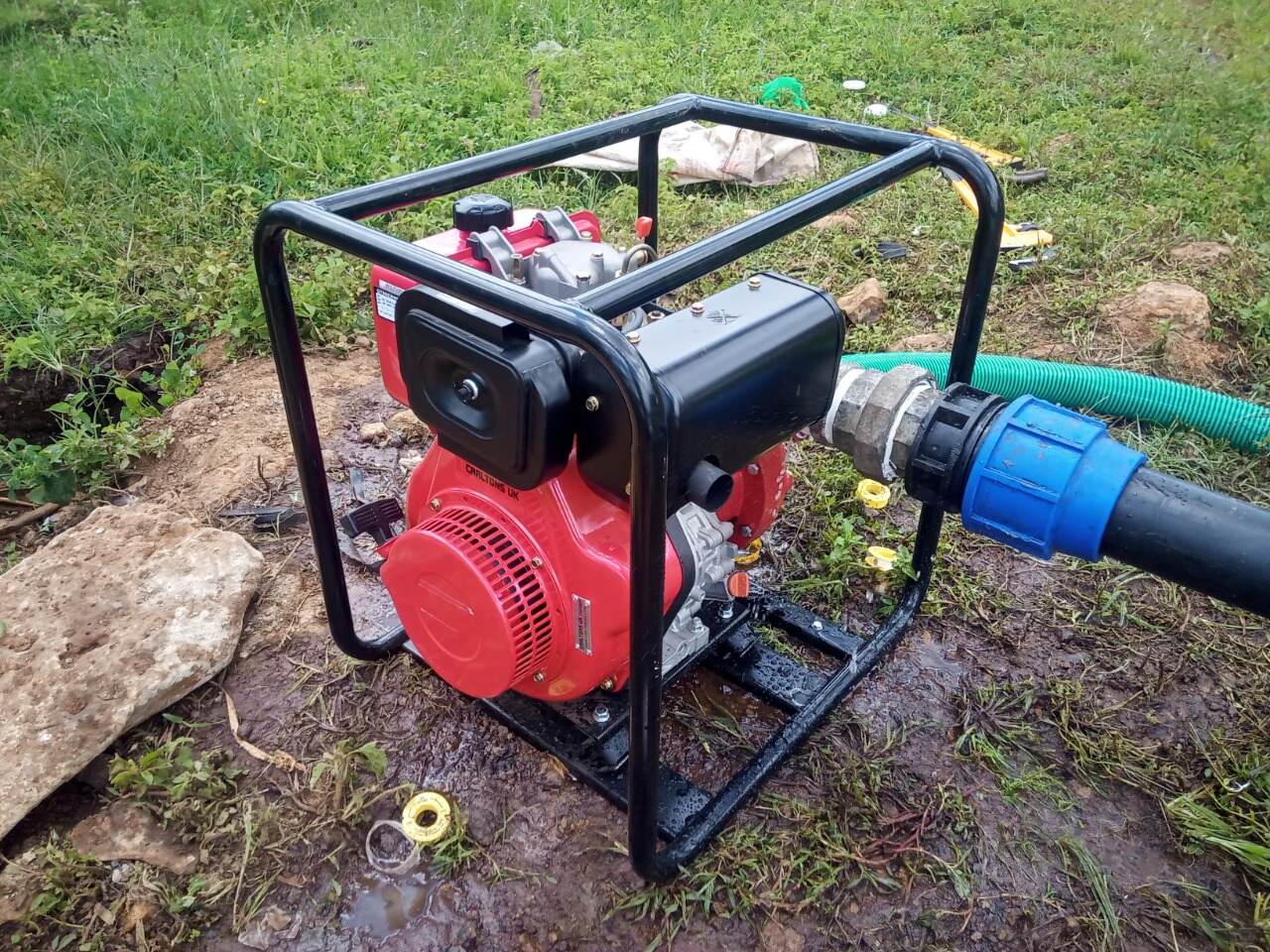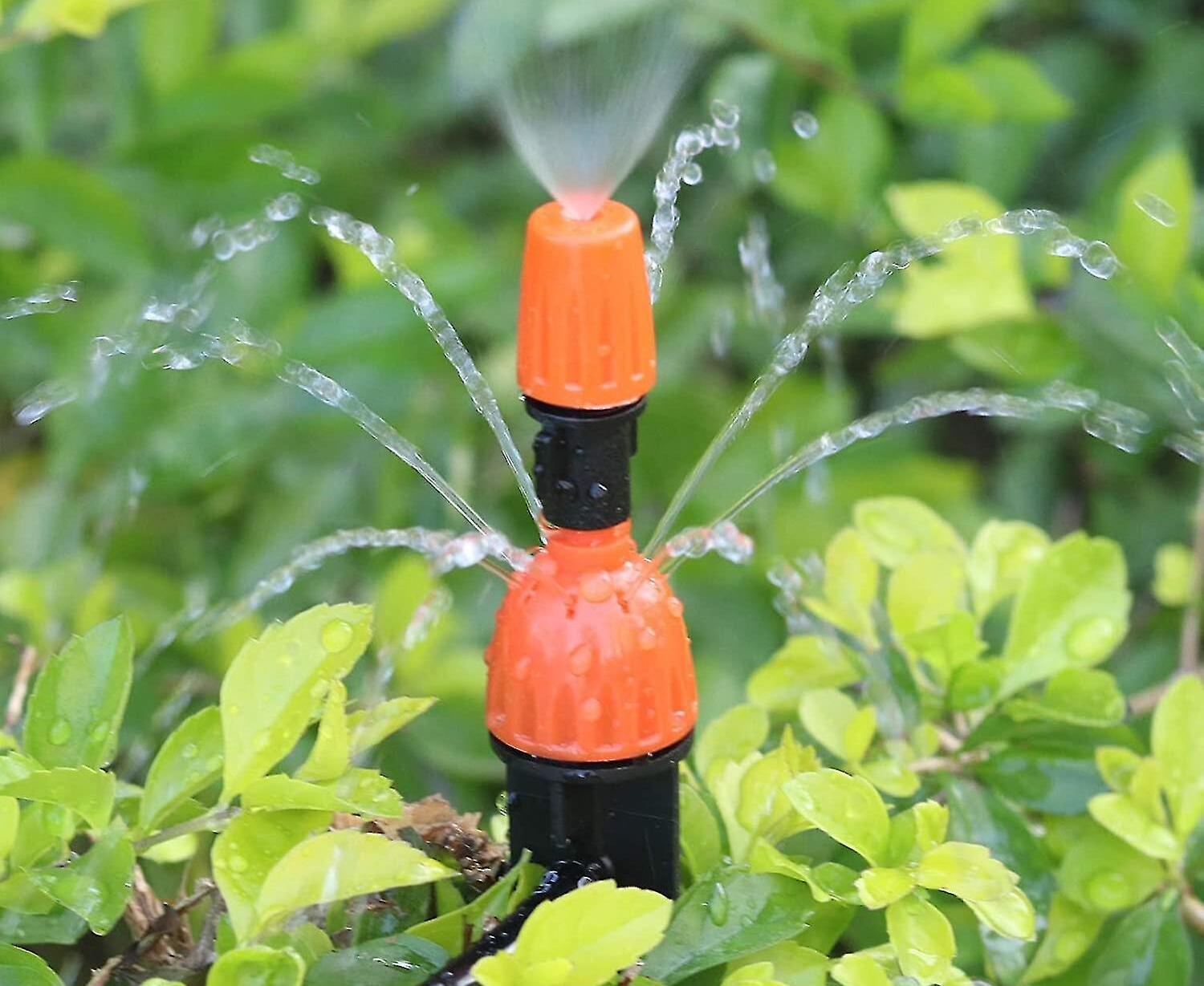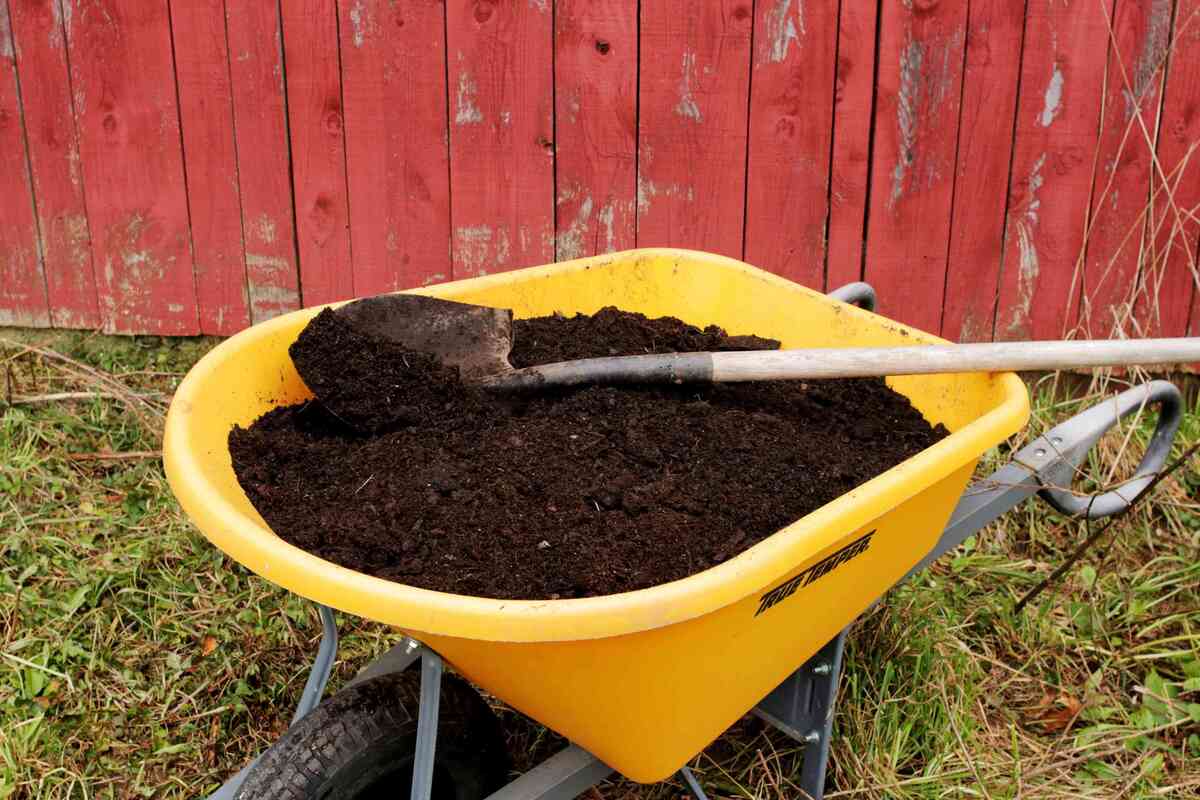Home>Gardening News and Trends>Latest News>When Will Irrigation Water Be Turned On In Nampa?


Latest News
When Will Irrigation Water Be Turned On In Nampa?
Published: November 20, 2023
Get the Latest News on When Irrigation Water Will Be Turned On in Nampa. Stay informed with updates on irrigation schedules and important announcements.
(Many of the links in this article redirect to a specific reviewed product. Your purchase of these products through affiliate links helps to generate commission for Chicagolandgardening.com, at no extra cost. Learn more)
Table of Contents
- Introduction
- Factors Influencing the Timing of Irrigation Water in Nampa
- Historical Patterns of Irrigation Water Turn-On in Nampa
- Current Conditions and Predictions for Irrigation Water Turn-On
- Nampa’s Water Management and Allocation Process
- Potential Impacts of Delayed Irrigation Water Turn-On
- Strategies for Coping with Delayed Irrigation Water
- Conclusion
Introduction
Welcome to Nampa, a vibrant and growing city nestled in the beautiful state of Idaho. As we approach the summer months, many residents eagerly anticipate the start of irrigation season. The availability of irrigation water is essential for maintaining green lawns, lush gardens, and productive farmlands.
In this article, we will explore the factors that influence the timing of irrigation water in Nampa. We’ll take a look at historical patterns, current conditions, and predictions for irrigation water turn-on. Additionally, we’ll delve into Nampa’s water management and allocation process, examining the potential impact of delayed irrigation and strategies for coping with such delays.
Water is a precious resource, and its availability can greatly impact our daily lives. The timing of irrigation water turn-on is carefully managed to ensure equitable distribution and conservation of this valuable asset. Understanding the factors affecting the availability of irrigation water will help us navigate the upcoming summer months and make informed decisions about our water usage.
While we eagerly await the start of irrigation water, it is important to note that the timing may vary from year to year based on various factors. Weather patterns, snowpack levels, water infrastructure maintenance, and regulatory requirements all play a part in determining when Nampa’s irrigation water will be turned on.
So, grab a cool drink and read on as we dive into the fascinating world of irrigation water in Nampa. Let’s explore the factors influencing its timing, the current situation, and how we can adapt our water usage to cope with potential delays.
Factors Influencing the Timing of Irrigation Water in Nampa
Several factors come into play when determining the timing of irrigation water turn-on in Nampa. These factors can vary from year to year and can greatly impact the availability and timing of water for irrigation purposes. Understanding these factors will give us insight into the complexities involved in managing irrigation water in our community.
1. Weather Patterns: One of the key factors influencing irrigation water turn-on is the weather. Spring rainfall and snowpack levels are carefully monitored to determine the water supply available for irrigation. If the region experiences a drier winter with lower snow accumulation, this can result in reduced water availability and potentially delay the turn-on date.
2. Reservoir Levels: Nampa relies on reservoirs to store water for irrigation purposes. The levels of these reservoirs play a crucial role in determining the timing of irrigation water. If the reservoir levels are too low, it may be necessary to delay the turn-on date to ensure adequate water supply throughout the season.
3. Water Infrastructure: The infrastructure responsible for delivering irrigation water must be properly maintained to ensure efficient and reliable distribution. Periodic maintenance and repairs may be necessary, which can impact the timing of irrigation water turn-on. These maintenance activities are essential to ensure the long-term sustainability of Nampa’s water supply.
4. Regulatory Requirements: Nampa, like many other communities, operates within regulatory frameworks established to protect water resources and ensure fair allocation. Compliance with these regulations is crucial, and the timing of irrigation water turn-on may be influenced by permit requirements, environmental considerations, and water rights allocations.
Ultimately, the timing of irrigation water turn-on in Nampa is a delicate balancing act. Water managers and officials collaborate closely with meteorologists, engineers, and regulatory authorities to make informed decisions based on the best available information. Their goal is to ensure a reliable and equitable water supply while considering environmental impacts and long-term sustainability.
By understanding these factors, Nampa residents can appreciate the complexities involved in managing irrigation water and adapt their water usage practices accordingly. Now that we’ve explored the factors influencing irrigation water timing, let’s shift our focus to the historical patterns of irrigation water turn-on in Nampa.
Historical Patterns of Irrigation Water Turn-On in Nampa
Over the years, Nampa has established a reliable and consistent pattern for turning on irrigation water. While the specific date can vary, there are general trends and historical data that provide insight into when residents can expect the start of irrigation season.
1. Average Turn-On Date: Based on historical data, the average turn-on date for irrigation water in Nampa falls around mid-April to early May. This is when temperatures rise, and the demand for water increases as vegetation begins to grow. However, it’s important to note that this is an average and may vary due to external factors.
2. Weather and Snowpack: As mentioned earlier, weather patterns and snowpack levels greatly influence the timing of irrigation water. In years with heavier snowfall and above-average precipitation, the turn-on date may be earlier as there is ample water supply. Conversely, in drier years or below-average snowpack, the turn-on date may be delayed to ensure sufficient water availability.
3. Water Availability: The availability of water plays a significant role in determining when irrigation water is turned on. If reservoir levels are low or if there are other water management issues, it may result in a later turn-on date to conserve and distribute water effectively.
4. Watering Restrictions: In certain situations, watering restrictions may be imposed to manage water usage during periods of high demand or limited supply. These restrictions can affect the timing of irrigation water turn-on, as authorities may choose to delay the start to encourage conservation or ensure compliance with regulatory requirements.
While the historical patterns provide a general guideline, it’s important to note that each year is unique and subject to various factors that can alter the turn-on date. As climate patterns and environmental conditions continue to evolve, there may be deviations from the historical norms. Water managers and authorities closely monitor these factors and make informed decisions to ensure a sustainable and reliable water supply.
Residents of Nampa can stay updated on the irrigation water turn-on date through official announcements from local water agencies, websites, or community newsletters. Being aware of historical patterns and staying informed will help residents plan their outdoor activities and ensure proper irrigation practices.
Now that we have explored historical patterns, let’s examine the current conditions and predictions for irrigation water turn-on in Nampa.
Current Conditions and Predictions for Irrigation Water Turn-On
As we look towards the upcoming irrigation season in Nampa, it’s important to assess the current conditions and predictions regarding the turn-on of irrigation water. Several factors are taken into consideration to determine when residents can expect the start of irrigation. Let’s explore the current conditions and predictions for irrigation water turn-on in Nampa.
1. Snowpack Levels: Snowpack levels are a critical factor in determining the availability of water for irrigation. Water managers monitor the snowpack throughout the winter season, as it serves as a crucial water source when it melts in the spring. Currently, the snowpack levels in the surrounding mountain ranges are above average, indicating a healthy water supply for irrigation purposes.
2. Reservoir Levels: The levels of reservoirs that store water for irrigation are also closely monitored. As of the latest readings, the reservoir levels in Nampa and the surrounding areas are within their desired range. This suggests that there is an ample supply of water for irrigation needs, increasing the likelihood of an on-time turn-on of irrigation water.
3. Weather Patterns: Weather forecasts play a vital role in predicting when irrigation water will be turned on. While it’s challenging to predict exact weather patterns months in advance, the current predictions indicate a favorable outlook. Moderate temperatures and regular precipitation are expected, which can contribute to the timely activation of irrigation water.
Based on the current conditions and predictions, it is anticipated that the turn-on date for irrigation water in Nampa will align with historical patterns. Barring any unforeseen circumstances or extreme weather events, residents can reasonably expect irrigation water to be turned on around mid-April to early May.
It is crucial to note that these predictions are not set in stone and can be subject to change based on evolving weather patterns and other factors. Water managers and authorities continuously assess the conditions and make informed decisions to ensure a reliable and sustainable water supply for the community.
Residents are encouraged to stay updated on official announcements from local water agencies and check reliable sources for the most accurate and up-to-date information regarding the turn-on date of irrigation water. By staying informed, residents can plan their outdoor activities and prepare their gardens and landscapes accordingly.
Now that we have explored the current conditions and predictions, let’s delve into Nampa’s water management and allocation process and understand how decisions regarding irrigation water turn-on are made.
Nampa’s Water Management and Allocation Process
Nampa’s water management and allocation process is a carefully orchestrated system designed to ensure the equitable distribution and sustainable use of water resources. Various entities collaborate to establish policies, regulations, and procedures to manage water usage effectively. Let’s take a closer look at Nampa’s water management and allocation process.
1. Water Management Authorities: Nampa has water management authorities responsible for overseeing the allocation and distribution of water resources. These authorities work closely with local government entities, water districts, and irrigation districts to ensure efficient water management practices.
2. Water Rights: Water rights in Nampa determine the legal allocation and permitted use of water. The system of water rights ensures that water is allocated fairly among different users, including residential, agricultural, and industrial needs. Water rights are granted based on historical usage and established regulations.
3. Water Conservation: Nampa places a strong emphasis on water conservation to maintain the sustainability of its water resources. The water management authorities enforce conservation measures and provide guidance to residents and businesses on efficient water usage practices. By implementing water-saving measures, such as using drip irrigation systems and reducing outdoor water usage during hot summer months, Nampa aims to reduce overall water demand.
4. Collaboration and Planning: Water management in Nampa involves collaboration between various stakeholders. Water managers, engineers, meteorologists, and regulatory authorities work together to assess water availability, monitor weather patterns, and develop strategies for water usage during different seasons. Long-term planning and constant evaluation ensure the optimal allocation of water resources.
5. Infrastructure Maintenance: Proper maintenance of water infrastructure is crucial for reliable water distribution. Nampa’s water management authorities invest in regular maintenance and upgrades of infrastructure, including pipelines, canals, and reservoirs. This helps prevent leaks, ensures efficient water delivery, and extends the lifespan of the water infrastructure.
The water management and allocation process in Nampa is a dynamic and evolving system that responds to changing conditions and priorities. Water managers and authorities strive to balance the needs of residents, agriculture, and the environment while adhering to regulatory requirements. The goal is to achieve sustainability and fairness in water allocation, ensuring a reliable water supply for current and future generations.
By understanding Nampa’s water management and allocation process, residents can gain insight into the complexity of water resource management. It also emphasizes the importance of responsible water usage and conservation practices to support the long-term sustainability of Nampa’s water supply.
Now that we have explored Nampa’s water management and allocation process, let’s examine the potential impacts of delayed irrigation water turn-on and discuss strategies for coping with such delays.
Potential Impacts of Delayed Irrigation Water Turn-On
A delayed irrigation water turn-on can have several impacts on Nampa’s residents, agricultural industry, and the local ecosystem. Understanding these potential impacts is crucial for individuals and businesses to plan and adapt accordingly. Let’s take a closer look at the potential consequences of delayed irrigation water turn-on.
1. Water Stress for Lawns and Gardens: Lawns and gardens heavily rely on irrigation water to maintain their health and appearance. A delayed turn-on can result in water stress, leading to brown and dry lawns, wilted plants, and reduced crop yields. Without sufficient water, the aesthetic appeal of residential areas and the productivity of agricultural lands may suffer.
2. Impact on Livestock and Farm Animals: Farmers and ranchers depend on irrigation water for their livestock’s drinking water and forage growth. Delayed water access can disrupt these essential needs, potentially leading to animal health issues and decreased farm productivity. Farmers may need to explore alternative water sources or adjust their feeding strategies to mitigate the impact.
3. Altered Planting and Harvesting Schedules: Delayed irrigation water turn-on can disrupt planting and harvesting schedules for farmers and gardeners. It may require adjustments to the timing of sowing seeds, transplanting seedlings, or harvesting crops. This can have ripple effects on overall agricultural operations and the availability of fresh produce in local markets.
4. Increased Water Demand: As the turn-on date is delayed, the demand for irrigation water intensifies. When water is finally made available, residents and businesses may consume larger amounts of water in a shorter period, putting strain on the water distribution system. This increased demand can lead to temporary water shortages or reduced pressure in some areas.
5. Environmental Consequences: Delayed irrigation water turn-on can impact the local ecosystem. Natural habitats and wildlife that rely on water sources may face challenges due to reduced water availability. Additionally, delayed irrigation can affect the growth of vegetation along waterways, potentially altering the ecological balance in these areas.
While these potential impacts highlight the challenges associated with delayed irrigation water turn-on, it’s important to note that water managers prioritize sustainable water management practices. Their decisions aim to minimize disruptions and ensure the long-term health of the community and its water resources.
Now that we have explored the potential impacts of delayed irrigation water turn-on, let’s discuss strategies for coping with such delays and managing water usage effectively.
Strategies for Coping with Delayed Irrigation Water
Coping with a delayed irrigation water turn-on requires proactive measures and efficient water management practices. By implementing these strategies, residents and businesses in Nampa can minimize the impact of water delays and make the most of the available resources. Let’s explore some effective strategies for coping with delayed irrigation water.
1. Water Conservation: Conserving water is crucial during times of limited availability. Residents can adopt water-saving practices such as using efficient irrigation systems like drip irrigation, watering during cooler times of the day to reduce evaporation, and fixing leaks in pipes and faucets. Additionally, replacing water-intensive plants with drought-tolerant alternatives can greatly reduce water usage in landscaping.
2. Soil Moisture Management: Proper soil moisture management can help maximize the effectiveness of available water. Adding organic matter to the soil improves its water-holding capacity, reducing the frequency of irrigation. Applying mulch around plants helps retain moisture, minimize weed growth, and regulate soil temperature.
3. Watering Prioritization: When water availability is limited, it’s important to prioritize watering needs. Focus irrigation efforts on essential plants, such as vegetable gardens or high-value landscaping, while reducing or eliminating watering for less critical areas. Monitoring soil moisture levels can help determine which plants require immediate attention.
4. Collecting and Reusing Water: Harvesting rainwater and reusing graywater from household activities, such as dishwashing or laundry, can supplement irrigation needs during water delays. Installing rain barrels, diverting graywater to plants, and incorporating water-saving appliances can help conserve water and reduce dependence on the main water supply.
5. Communication and Education: Staying informed about the status of irrigation water turn-on and sharing information within the community is essential. Local water management authorities and organizations provide updates on water availability, restrictions, and conservation tips. Community workshops and outreach programs can educate residents about efficient water usage and the importance of water conservation.
6. Drought-Resistant Landscaping: Transitioning to a drought-resistant landscape can significantly reduce water requirements during a delay. Incorporating native plants that are well-adapted to the local climate can thrive with minimal irrigation. Xeriscaping techniques, such as grouping plants with similar water needs and using permeable surfaces, can further conserve water and minimize the reliance on irrigation.
By implementing these strategies, Nampa residents can effectively cope with delayed irrigation water turn-on and ensure responsible water management practices. It’s important to remember that conserving water is a collective effort and that every individual’s contribution makes a significant impact in the overall sustainability of the community’s water resources.
Now that we have explored strategies for coping with delayed irrigation water, let’s conclude our discussion on managing irrigation water in Nampa.
Conclusion
Managing irrigation water in Nampa is a complex endeavor influenced by various factors such as weather patterns, reservoir levels, and regulatory requirements. Understanding these factors and their potential impact on water availability allows residents and businesses to adapt and plan accordingly.
Historically, Nampa’s irrigation water turn-on falls around mid-April to early May. However, it’s important to recognize that each year can bring unique circumstances that may affect this timeline. Factors such as snowpack levels, water infrastructure maintenance, and water rights allocations play significant roles in determining the timing of irrigation water turn-on.
+
The current conditions and predictions for irrigation water turn-on in Nampa are encouraging. Snowpack levels and reservoir levels are within their desired range, and weather forecasts indicate favorable conditions. These factors bode well for an on-time turn-on of irrigation water.
Nampa’s water management and allocation process ensures responsible and sustainable water usage. Water conservation measures, collaboration among stakeholders, and infrastructure maintenance are key elements in maintaining a reliable and equitable water supply.
However, delays in irrigation water turn-on can have potential impacts on lawns, gardens, livestock, and the local ecosystem. By implementing strategies such as water conservation, soil moisture management, and prioritizing watering needs, residents can cope with water delays and minimize the impact on their landscapes and productivity.
Furthermore, collecting and reusing water, communication and education, and transitioning to drought-resistant landscaping are effective means of conserving water and reducing dependence on the main water supply during delays.
As we navigate the irrigation season, staying informed through official announcements and participating in community efforts to conserve water are crucial. Responsible water usage and effective coping strategies contribute to the long-term sustainability of Nampa’s water resources.
Remember, water is a valuable and finite resource, and our individual actions can make a significant difference in preserving it for future generations. By being mindful of our water consumption and adapting to potential delays, we can ensure a vibrant and sustainable Nampa for years to come.







